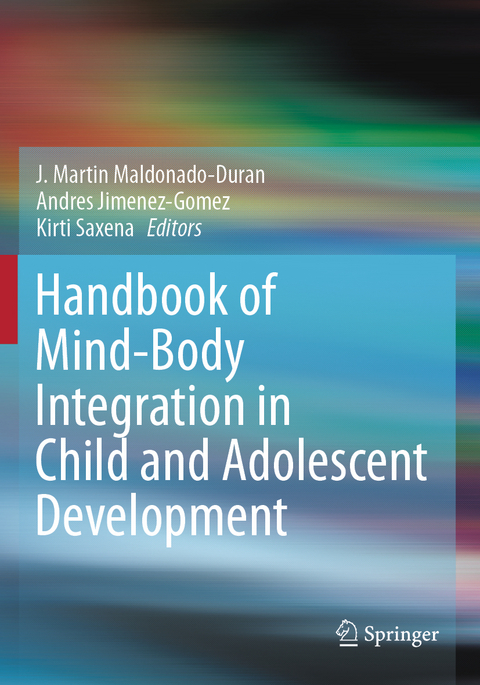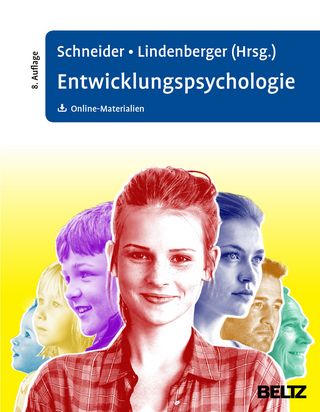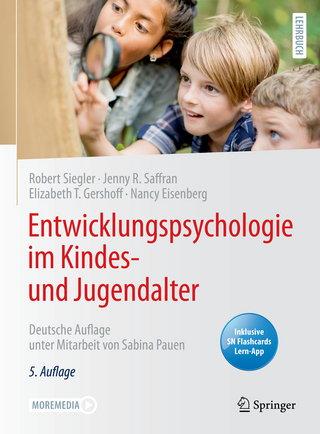
Handbook of Mind/Body Integration in Child and Adolescent Development
Springer International Publishing (Verlag)
978-3-031-18379-9 (ISBN)
Key areas of coverage include:
- Developmental issues in the embodiment of self and body image in children and adolescents.
- Trauma and mind/body consequences in children and adolescents.
- Munchausen syndrome by proxy.
- Unexplained medical conditions, somatoform disorders, and conversion disorders during childhood and adolescence, including unexplained conditions in different organ systems (e.g., gastrointestinal, dermatological, neurological).
- Body/mind conditions in youth with physical and intellectual disabilities and chronic or severe medical conditions, including palliative care.
- Complementary and alternative treatment approaches to mind/body issues in children and adolescents, supplementing the usual mental health interventions.
The Handbook of Mind/Body Integration in Child and Adolescent Psychiatry is an essential resource for researchers, professors, and graduate students as well as clinicians, therapists, and related professionals in developmental psychology, child and adolescent psychiatry, family therapy, social work, pediatrics, and public health.
J. Martin Maldonado-Duran, M.D., is an infant, child, and adolescent psychiatrist and family therapist. He is Associate Professor of psychiatry at the Menninger Department of Psychiatry, Baylor College of Medicine and works at the complex care service in the Texas ChildrensHospital. He is also an adjunct professor of infant psychopathology at Kansas State University and a clinical professor at the Kansas University School of Medicine. He was formerly a researcher at the Child and Family Center of the Menninger Clinic for several years. He edited the book, Infant and Toddler Mental Health(American Psychiatric Press) and has coedited or edited five additional books in Spanish on topics of child and infant mental health as well as the Clinical Handbook of Transcultural Infant Mental Health (Springer). Dr. Maldonado has written numerous papers and book chapters on topics of child development and psychopathology in several countries.
Andrés Jiménez-Gómez, M.D., is a developmental neurologist at the Department of Neurology of Baylor College of Medicine. His work is based at the Joe DiMaggio Children's Hospital in Hollywood, FL. He has written numerous articles and papers on multiple aspects of child neurology, pediatrician education, and global health. He is a founding member of AREPA, an association of Latin American Pediatricians that fosters the education and exchange of pediatricians in the Americas. He is coeditor of the Clinical Handbook of Transcultural Infant Mental Health (Springer).
Kirti Saxena, M.D., is an Associate Professor of Child and Adolescent Psychiatry at the Menninger Department of Psychiatry, Baylor College of Medicine. As a postdoctoral research fellow at Stanford University, she was intrigued by how children/adolescents who presented with impulsive aggression were placed on multiple medications with no significant improvement in their impulsive aggression or other psychiatric symptoms. Many of these youths were given a diagnosis of bipolar disorder. This clinical experience led to her interest in the systematic diagnoses and treatment of youth with disorders of maladaptive aggression. Dr. Saxena's goal was to utilize and implement this knowledge from clinical trials into regular clinical practice. Upon completion of her postdoctoral training at Stanford, she joined UT Southwestern (UTSW) in Dallas, TX, to start a program for pediatric bipolar disorder. In her outpatient clinical practice, she assessed clinical outcomes of evidence-based diagnostic assessments and a psychopharmacological treatment algorithm. This clinical work led Dr. Saxena to realize the need for understanding neurobiological underpinnings of youths who presented with impulsivity, impulsive aggression and mood dysregulation. At UTSW, she studied white matter changes in youth with bipolar spectrum disorders in comparison to healthy controls. She conducts collaborative funded research with the University of Texas. This research collaboration uses clinical assessments, neuroimaging (structural, DTI, rsfMRI and task fMRI), EEG, neurocognitive measures and genetic biomarkers to study biological predictors in youths with bipolar disorder and those at high risk for the development of bipolar disorder. Dr. Saxena has also started a yoga program for high school students in Houston. She collaborates with the Institute for Spirituality and Health to do this project.Section 1. Developmental Issues in the Embodiment of the Self and Body Image in Children and Adolescents.- Chapter 1. Introduction: Mind, Body and Development in Context.- Chapter 2. The Body of the Baby.- Chapter 3. The Preschool Child and the Growing Body and Its Difficulties.- Chapter 4. The Body of the School-Age Child.- Chapter 5. The Body of the Adolescent.- Section 2. Trauma and Mind/Body Consequences in Children and Adolescents.- Chapter 6. Embodiment of the Self in Conditions of Neglect and Antipathy During Childhood and Adolescence.- Chapter 7. Embodiment of the Self in Physical Abuse Situations During Childhood and Adolescence.- Chapter 8. Embodiment of the Self in Sexual Abuse During Childhood and Adolescence.- Chapter 9. The Child's Self in Situations of Environmental, Social Violence, Armed Conflict, and Widespread Insecurity.- Chapter 10. Complexities of Diagnosis and Management of Pain in Children and Adolescents.- Section 3. Medical Child Abuse or Munchausen Syndrome by Proxy.- Chapter 11. Medical Child Abuse and Factors in the Health Care System.- Chapter 12. Clinical Presentations of Medical Child Abuse Cases.- Chapter 13. Intervention Strategies and Challenges in Medical Child Abuse Cases.- Section 4. Unexplained Medical Conditions, Somatoform Disorders, and Conversion Disorders During Childhood and Adolescence.- Chapter 14. Conversion, Unexplained Medical Symptoms, Somatization, and Hypochondria in Children and Adolescents.- Chapter 15. Generalized Medical Conditions in Children and Adolescents: Chronic Fatigue Syndrome, General Distress Syndrome, and Neurasthenia.- Chapter 16. Neurological Symptoms in Children and Adolescents.- Chapter 17. Otolaryngology Symptoms: Ear, Nose, and Throat Problems in Children and Adolescents.- Chapter 18. Respiratory and Gastrointestinal Symptoms in Children and Adolescents.- Chapter 19. Other Unexplained Symptoms in Various Systems During Childhood and Adolescence.- Chapter 20. Connections Between Bodily Conditions and Emotional States in Children and Adolescents.- Section 5. Complementary Mind/Body Interventions for Children and Adolescents with Physical and Intellectual Disabilities.- Chapter 21. Chronic Conditions of Disability and Pediatric Complex Care.- Chapter 22. Yoga, Meditation, and Mindfulness for Children and Adolescents.- Chapter 23. Hypnosis, Guided Imagery, Biofeedback, and Body Activation Therapies for Children and Adolescents.- Chapter 24. Eye Movement Desensitization and Reprocessing, Psychodynamic Psychotherapies, and Mentalization-Based Psychotherapies.- Chapter 25. Body Activation Therapies.
| Erscheinungsdatum | 16.03.2024 |
|---|---|
| Zusatzinfo | XXIV, 518 p. 2 illus. |
| Verlagsort | Cham |
| Sprache | englisch |
| Maße | 178 x 254 mm |
| Themenwelt | Geisteswissenschaften ► Psychologie ► Entwicklungspsychologie |
| Schlagworte | Body image and mind/body connections in childhood • Cardiovascular symptoms and mind/body problems in children • Complementary and alternative medicine and mind/body issues • Conversion disorders and mind/body problems in youth • Dermatological symptoms and mind/body issues • Development of mind/body interactions in early childhood • Embodiment of the self, infancy through adolescence • Endocrinology and mind/body issues during childhood • Family context and mind/body issues in childhood • Medical child abuse and mind/body issues • Medically unexplained symptoms during childhood • Mind/body interactions and youth • Munchausen by proxy and mind/body issues • Pediatric complex care and mind/body problems • Psychogenic pain and mind/body issues in childhood • Psychosomatic conditions in children • Rumination and mind/body issues in childhood • Social context and mind/body issues in childhood • Somatic effects of neglect and abuse • Somatization and mind/body issues |
| ISBN-10 | 3-031-18379-7 / 3031183797 |
| ISBN-13 | 978-3-031-18379-9 / 9783031183799 |
| Zustand | Neuware |
| Informationen gemäß Produktsicherheitsverordnung (GPSR) | |
| Haben Sie eine Frage zum Produkt? |
aus dem Bereich


